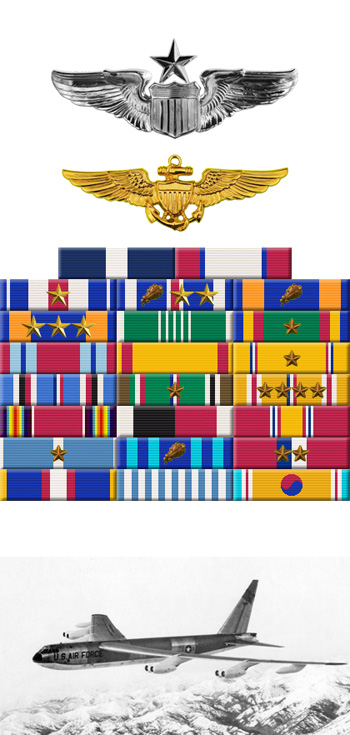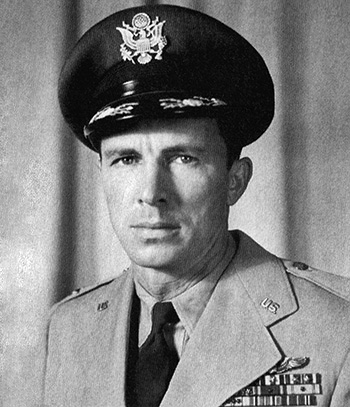
|
Patrick D. Fleming |
 |
|||
| Rank, Service | ||||
Colonel O-6, U.S. Air Force |
||||
| Veteran of: | ||||
|
||||
| Tribute: | ||||
Pat Fleming was born on January 17, 1918, in New York City, New York. He entered the U.S. Naval Academy on July 8, 1937, and graduated with a commission as an Ensign on February 7, 1941. His first assignment was aboard the light cruiser USS Cincinnati (CL-6) from February 1941 to November 1942, during which time he participated in escort and patrol operations in the Atlantic Ocean and the Caribbean, followed by flight training at NAS Pensacola, Florida, where he was designated a Naval Aviator in May 1943. After completing Night Fighter training in November 1943, LT Fleming served as a flight instructor at NAS Atlantic City, New Jersey, from December 1943 to March 1944, when he joined VF-80 aboard the aircraft carrier USS Ticonderoga (CV-14). He was credited with the destruction of 10 enemy aircraft in aerial combat before transferring to VBF-80 aboard the aircraft carrier USS Hancock (CV-19) in January 1945. During February 1945, LT Fleming destroyed another 9 enemy aircraft, for a total of 19 during World War II, making him the 4th highest scoring U.S. Navy Ace of the war. LCDR Fleming served as Commanding Officer of VF-80 from May 1945 to September 1946, and then served as a test pilot at NAS Patuxent River, Maryland, until resigning his commission in the Navy and joining the Army Air Forces on July 1, 1947, transferring to the new U.S. Air Force in September 1947. Col Fleming continued on as a test pilot with the Air Force at Wright-Patterson AFB, Ohio, and Edwards AFB, California, until December 1949. His next assignment was as a project officer with the 4925th Special Weapons Group at Kirtland AFB, New Mexico, from January to September 1950, followed by service with B-47 Project WIBAC at MacDill AFB, Florida, from September 1950 to January 1952. During this time he participated in Project 52 AFR-18 with the 306th Bomb Wing at MacDill, which used modified B-47 Stratojet bombers to make reconnaissance flights over the Soviet Union. Col Fleming transferred to Headquarters Strategic Air Command at Offutt AFB, Nebraska, in January 1952, serving there until June 1953, when he joined the 98th Bomb Wing at Fairchild AFB, Washington. While with the 98th BW, he deployed to Japan, flying combat missions during the last month of the Korean War, and remaining in theater until returning to the U.S. in December 1953. Col Fleming's final assignment was as Deputy Commander of the 93rd Bomb Wing at Castle AFB, California, from January 1954 until he was killed in the first B-52 Stratofortress crash on February 16, 1956. |
||||
|
||||

